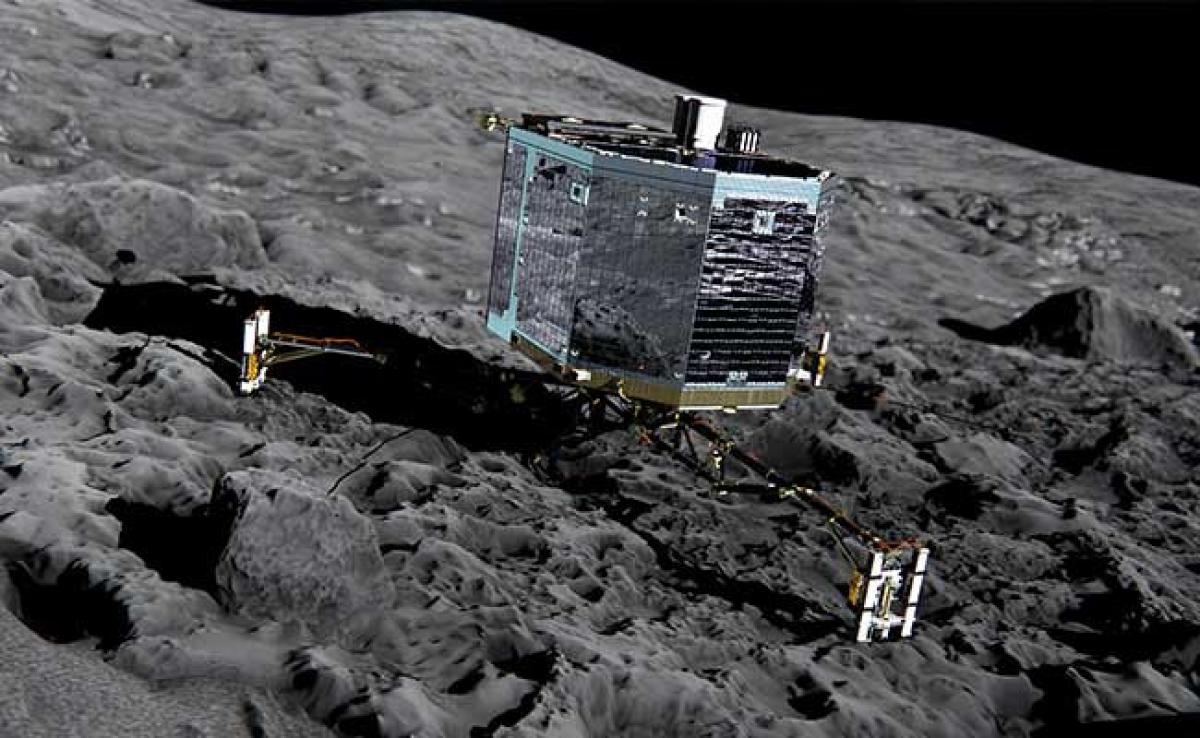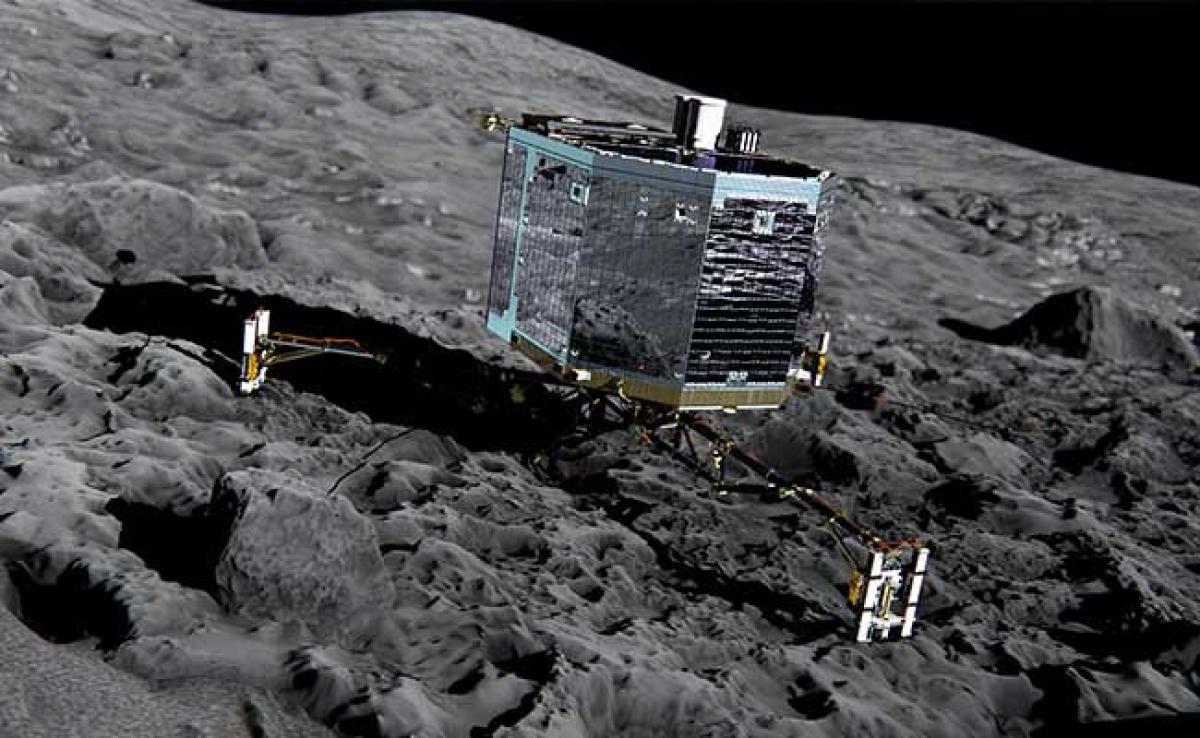Philae the Little Lost Lander Finds Organic Molecules on Comet

It really is the little lander that could.The European Space Agency\'s probe Philae may be struggling to stay in touch, but its first finds on its new home are pretty special.
It really is the little lander that could.The European Space Agency's probe Philae may be struggling to stay in touch, but its first finds on its new home are pretty special.

Transmitting from a shadowy corner of Comet 67P/Churyumov-Gerasimenko nicknamed "Chury," Philae found several organic molecules -- including four never detected before on a comet, which are important building blocks of life.
Data analyzed in seven studies published Thursday in the American journal Science were gathered with 10 instruments on board Philae during the first 60 hours after its arrival on Chury, between November 12-14 of last year.
"None of this was known before," said Professor Jean-Pierre Bibring, head of science for the Philae mission, telling AFP that "the physical properties and composition of a comet are nothing like we imagined."
Philae found the 4.6-billion-year-old body around 75 to 85 percent porous, with a granular surface in places and a rigid crust elsewhere.
Bibring said scientists had expected to find an object held together by ice, but instead found complex organic molecules formed at the birth of the solar system.
Those molecules may have been the seeds of life in Earth's oceans when they fell on our planet.
"We have already found fascinating molecules that we've never seen on a comet before," he told AFP.
Time Capsule in Space
In total, 16 compounds have been identified from six classes of organic molecules, including alcohols and amino acids.
According to Bibring, some of these chemicals form the "start of an evolutionary chain that could lead them to form complex organic components."
The comet has remained in a fairly stable condition since the formation of the solar system 4.6 billion years ago -- a time capsule in space.
"I'm convinced that Philae will help us progress considerably in our understanding of the origin of life," Bibring said.
The little lander separated from the Rosetta probe on November 12 last year and made a dramatic interception of the comet Chury.
Hitting the comet at all was an achievement, but disaster almost struck when landing harpoons failed to fire.
Philae bounced before falling into a shadier nook than planned, under cliffs, where the sun could not reach its solar panels.
The lander was able to work for only 60 hours before going to sleep, but seven months later, as Chury neared the sun, it awoke.
Since June, it has been able to communicate with its mothership Rosetta, holding 200 kilometers away to avoid the comet's dust and gas plumes.
On it eighth and so far last transmission on July 9, Philae sent a long burst of data.
So far, unfortunately, Earth-bound scientists have not been able to send back fresh instructions to their brave explorer.
But in the meantime, Philae is making the most of its mission.
"Philae is not dead," Bibring insisted. "It's making efficient use of its survival mode."
Next Story




















